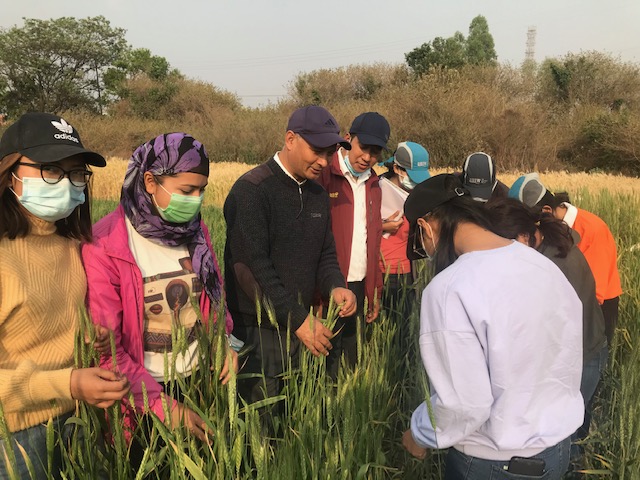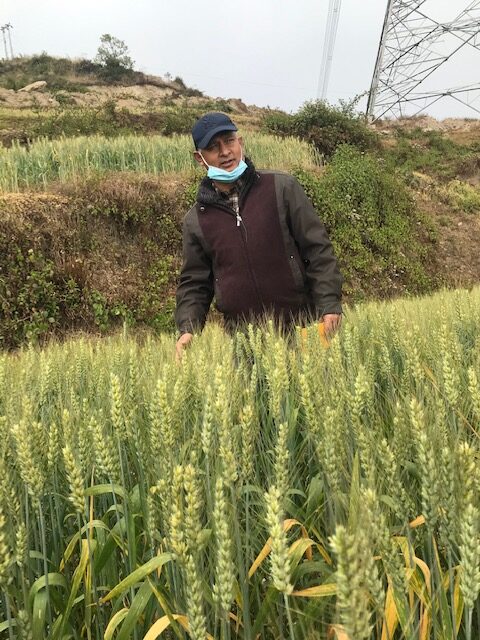Dhruba Thapa recently retired from the Nepal Agricultural Research Council (NARC) after a 28-year career. Thapa has been a key partner for the BGRI in Nepal and was a recipient of the first BGRI Gene Stewardship Award in 2012 as a member of Nepalese team.
Wheat farmers in Nepal faced a crisis in 2007. A severe yellow rust outbreak destroyed entire fields throughout the county, with many farmers losing hope that they would ever grow wheat again.
With food security under threat, our team at the Nepal Agricultural Research Council (NARC) sprung into action. My team and I released a yellow rust resistant bread wheat variety named “WK1204.” In addition to strong disease resistance, WK1204 also generated higher yields. Farmers acknowledged us for releasing this wonderful variety during their hard time.
Looking back at my time at NARC, I am especially proud of our impact during that grave time. It is just one example of the kind of work we are doing continually to protect our farmers in Nepal. The varieties we are releasing now have the genetic composition of minor and linked genes providing durable resistance to the three rust species. Recently released three biofortified wheat varieties will alleviate malnutrition issues in Nepal.
Wheat has come a long way in my country. It is grown at terai (small), mid and high hills of Nepal. In 1960, wheat was cultivated on approximately 111,000 hectares which produced 126,000 metric tons. Wheat production has increased dramatically due to releases of new high yielding disease resistant varieties, increased irrigation facilities, improved access to input supplies, and establishment of flour mills. As of 2021, wheat is grown on 708,000 hectares which produced 218,500 metric tonsThat represents an almost six-fold increase in yield from the same amount of land.

Dhruba Thapa (center) with students in the field
But wheat in Nepal still faces challenges. Climate change, in the form of increasing temperatures and erratic rainfall patterns, threatens to reduce wheat yield by 30% by 2030. I also worry about new virulence of yellow, leaf and stem rust biotypes (Ug99) threatening food security because there are many micro-environments favorable for recombination and mutation of rust pathogens on barberry as alternate hosts.
I am hopeful though that we can overcome these challenges through continued international collaboration fostered by the BGRI. It’s been a point of pride for me personally to work together with so many researchers from around the world which has allowed me to see first-hand the benefits of global cooperation.







